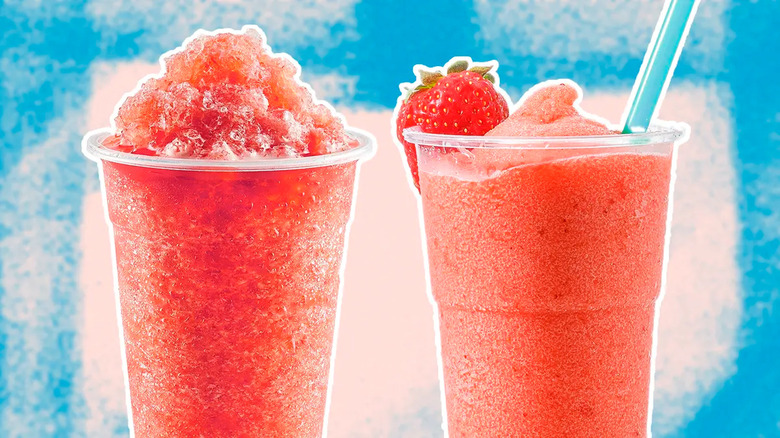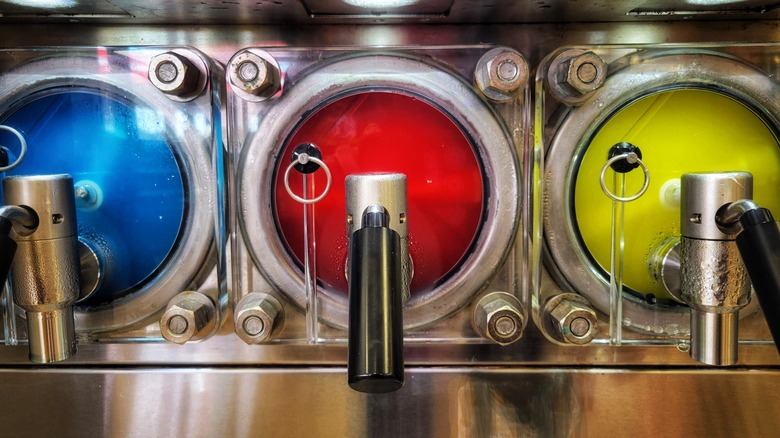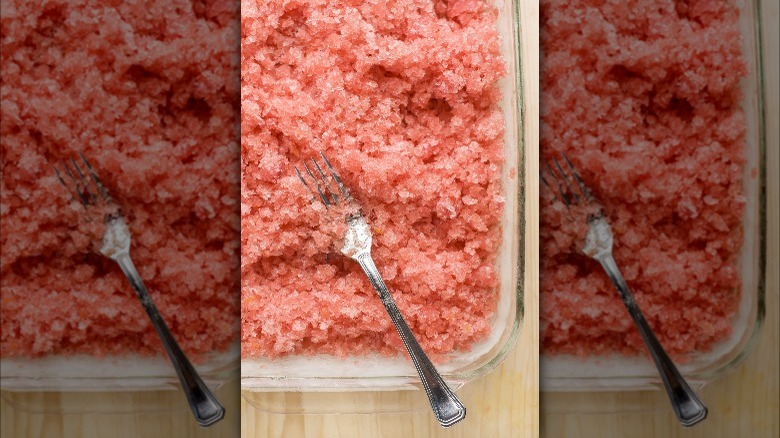The Subtle Difference Between Slushies And Granitas
In the northern hemisphere, summer officially begins in the final days of June. For many people, though, the start of summer is marked by something more meaningful, like opening the pool or securing the first slushie of the season. Slushies have been a pillar of the quintessential American summer since the ICEE was introduced in the '50s. Made in a frozen beverage machine dreamt up by Dairy Queen franchisee Omar Knedlick, the semi-frozen drinks typically came in two flavors: cola and cherry. Since then, slushie culture has continued to expand in the U.S., with most gas stations and convenience stores now offering a smorgasbord of flavors.
Of course, Americans aren't the only ones who enjoy a sweet frozen treat in the dog days of summer. On the Mediterranean coast, people in Italy's southernmost regions are partial to granitas. A semi-solid, often citrusy dessert that has been around since the 9th century, granitas are the Sicilian dessert that will keep you cool in the summer heat. But what makes one frozen fruity treat different from the other? It's simple: While slushies are made in a machine and flavored with sugary syrup, granitas are made from hand-shaved ice and commonly flavored with fruit juice or purée.
What, exactly, are slushies?
Made with water and flavored syrup, slushies contain tiny, toothsome bits of ice that can easily move through a straw and down the throat. Because slushies are made with a frozen beverage machine, the ratio of sugar to water is critical, as the sugar molecules work to prevent the water from freezing entirely. According to The Restaurant Store, the sweet spot for the sugar content in a slushie is between 13% and 15%.
In order to make the final product smoother and more drinkable, the circulating frozen machines also infuse the slushies with carbon dioxide. As such, slushies are much more like frozen sodas, complete with tiny bubbles that dance on the tongue and plenty of carbonic acid that works to better deliver that ultra-sweet syrupy taste. Omar Knedlick licensed the technology for his frozen beverage machine to 7-Eleven in 1965, which catapulted the Slurpee into the global spotlight. However, the only real difference between Slurpees and ICEEs is which flavors each carry and where they're sold.
So, what's the deal with granitas, then?
Born in Sicily when the region was still under Arab occupation, granitas have long been a favorite treat for those residing on Italy's southern coast. It was likely a regional adaptation of a Persian treat called sharbat — or sherbet — made from partially freezing a mixture of sugar and fruit juice. Unlike slushies, which are made in a machine, granitas are a labor of love, made by shaving ice crystals off of a partially-frozen ice block with a fork. As such, the texture is much coarser than your typical slushie (or even an Italian sorbetto), and consuming one often requires the use of a straw and a spoon.
Because granitas are made with real fruit juices or purées, the flavors are much more straightforward than those of the neon-colored concoctions found at American gas stations. On the Amalfi Coast, where citrus trees grow in abundance, lemon and orange granitas are commonly sold on street corners and near beaches. Coffee and almond flavors are also common. In Eastern Sicily, cinnamon and jasmine flavored granitas are more prominent.


